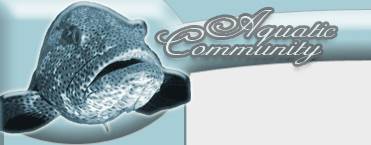Leishmaniasis in dogs
What is Leishmaniasis?
Leishmaniasis is a parasitic disease found all over the world and Leishmania can affect dogs and humans alike. It has been introduced to the North American continent fairly recently and many vets are not familiar with this disease, making it easy to miss. Leishmaniasis is caused by a protozoan parasite from the genus Leishmania and can only be transmitted by certain species of biting sand fly. The disease exists in two forms: cutaneous Leishmania and visceral Leishmania. Both types can affect dogs. Visceral Leishmania is much more serious than Cutaneous Leishmania, since it means that parasites have reached vital internal organs of the dog.
Leishmaniasis symptoms in dogs
Leishmaniasis will progress slowly in the dog’s body and it can take up to seven years from infection to the point when the dog owner starts to notice Leishmaniasis symptoms in the dog. The symptoms are often vague and the vet might treat the dog for other more common diseases before realising that the cause of the problems is Leishmaniasis. There are also quite a lot of dogs that seem to be naturally resistant to the parasite – they are infected but they never develop any symptoms of Leishmaniasis. In endemic areas, up to 90% of the dogs can have a genetic predisposition not to develop any symptoms.
Common symptoms of Leishmaniasis in dogs are weakness, listlessness, intolerance to exercise, and loss of appetite (often leading to weight loss). In some dogs, these symptoms are accompanied with hepatosplenomegaly, local or generalized lymphadenopathy, and/or a fever. Up to 90% of dogs suffering from symptomatic Leishmaniasis have both visceral and cutaneous lesions. Cutaneous Leishmaniasis lesions are normally dry and the dog will loose its hair. The head is usually the first place for lesions to show, especially on the muzzle and pinna. Lesions originating on the footpads are also quite common. Eventually, the Leishmaniasis lesions can spread to the rest of the dog’s body.
Articular involvement is not uncommon when it comes to Leishmaniasis in dogs, and can lead to swollen joints and a stiff gait. Other symptoms of Leishmaniasis in dogs are chronic diarrhoea, deformed and brittle nails, and ocular lesions.
Leishmaniasis treatment for dogs
Unfortunately, Leishmaniasis in dogs is difficult to treat. Experts still don’t know why, but visceral Leishmaniasis is much harder to treat in dogs than in humans. In many dogs, the symptoms re-appear as soon as treatment is stopped.
In areas where Leishmaniasis is endemic, the most commonly used Leishmaniasis treatment for dogs is a combination of allopurinol and a pentavalent antimonial, e.g. meglumine antimonite or sodium stibogluconate. If you live in the United States, Pentostam® (sodium stibogluconate) is currently the only available antimonial drug. Unfortunately, a lot of parasites are today resistance to the abovementioned compounds. There are also problematic side-effects.
Another possible treatment is Amphotericin B since this drug binds sterols and disrupts the permeability of the cell membranes of the dog. This drug is unfortunately nephrotoxic, and the treatment can not be said to be highly effective.
Parenterally administered Paramomycin will act synergistically with antimonials (e.g. meglumine antimonite or sodium stibogluconate), thereby creating higher levels of antimonials in the body of the dog for a longer period of time, but this is also nephrotoxic.
Pentamidine isethionate has proven effective against Leishmaniasis in dogs, but you have to take your dog to the vet for a minimum of 15 intramuscular injections. These injections are undoubtedly painful for the dog.
Several types of orally administered drugs are efficient when it comes to merely containing the disease, but the cost for long term treatment can be hard for many dog owners. Examples of such drugs are Itraconazole, Fluconazole, Miconazole, and Ketaconazole. Another problem with prolonged routine use of such drugs is the risk of drug resistance.
